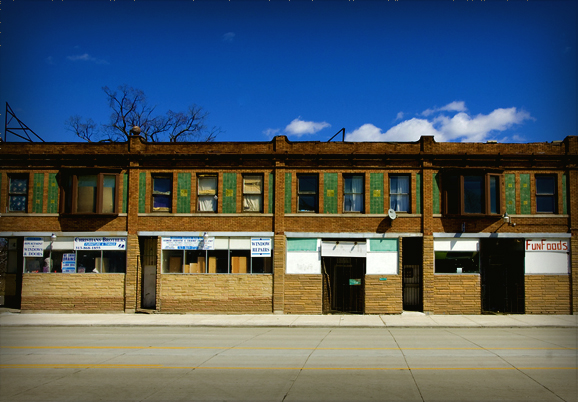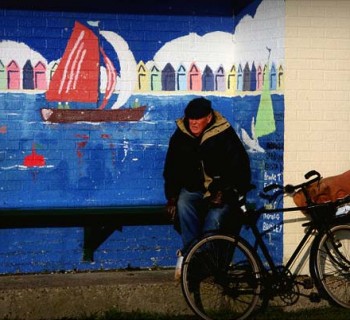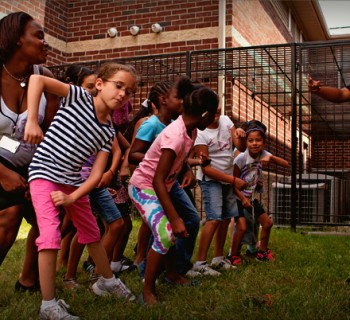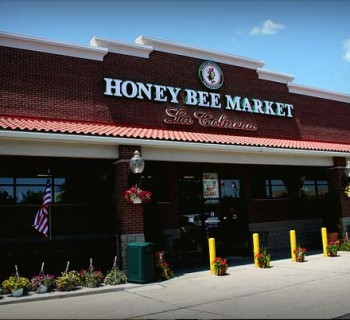Written by Theodore Brown
If there’s a city that is more exemplary of American hard times in the modern era than Detroit, I haven’t heard of it. The twin haymakers of industrial exodus and the auto industry swoon have left their mark on the Motor City—but the scars aren’t indelible.
Detroit, like Cleveland and any number of cities that were hit hard by the recession, is taking a necessary hatchet to their budget, rethinking priorities, and making tough choices when it comes to services. Just like Cleveland, though, Detroiters are organizing around community institutions, a sort of privatized grassroots.
Community efforts in Detroit can be bifurcated along geographic borders: in the Downtown and Midtown area, which includes the quintessentially Detroit Woodward Corridor, you have Sue Mosey, president of Midtown Detroit and the doyenne of Detroit community advocacy.
Flanking the central business district are an amalgam of organizations working to make the outskirts of Detroit a better place and attempting to sew the same seeds that have seen generous growth downtown in recent years. No growth is without pain, though.
“Most of the community development corporations in the city see that the city simply doesn’t have the staffing in the planning department to provide project management for the different neighborhoods,” Sue Mosey told me in February, “As effective as we can be we need a strong partner in the planning department.”
The echoes of Cleveland’s administrative truncation are obvious; with budgets being cut for social and sometimes essential services in Detroit there is less opportunity for, in Mosey’s words, “the consistency of a single [governmental] person who gets to know your neighborhood really well.”
CDCs still need a reciprocal teammate to get meaningful work done though, and Mosey has become an expert at leveraging dollars and manpower to make the collaboration between non-profit and government substantial.
“We have a residential incentive program with $10 million in capital to encourage residents to move in [to downtown Detroit],” Mosey told me, “and we have two major hospital complexes [Henry Ford medical and Vanguard Health Systems] investing $500 million each in their medical center properties.”
Detroit is not playing with small chips. Sue Mosey is optimistic not only at the prospects of downtown and midtown, but is excited about the burgeoning success of the present, “This neighborhood has never done so well. Tons of small businesses are moving in; we have a groundswell of entrepreneurism here.”
“Most of the community development corporations in the city see that the city simple doesn’t have the staffing in the planning department to provide project management for the different neighborhoods, ...”
~ Sue Mosey
The housing market, at least in this area of Detroit, is trending positive as well with 95 percent of the housing stock occupied in downtown and midtown thanks to the aforementioned incentives put in place by Mosey’s organization. These aren’t modest results in a city like Detroit where homes were famously being sold for $1 during the worst of the last decade and peak unemployment numbers within city limits reached an unbelievable 30 percent.
Mosey’s efforts are a big reason that downtown and midtown Detroit are coming back from those awesome troughs. Not everywhere has the inherent benefits of being a downtown business district, though, and rehashing the individual efforts of Sue Mosey’s Midtown Detroit isn’t necessary to explain exactly how she began this process 25 years ago. Those lessons are seeing new applications in new regions of the metro area.
“Everything we’re seeing—what we see now in terms of growth in the center of the city—is because of [Sue Mosey’s] organization,” Helen Broughton, community manager of the quasi-governmental non-profit Next Detroit, told me over the phone, “the rest of us are just at that groundbreaking, we’re hacking through the weeds. It’s a different world and it’s been hard.”
Broughton, like Mosey, understands that doing small things can result in big windfalls, “One of our main focuses has been Clean Neighborhoods and we’re duplicating the litter picking program they have in downtown,” Broughton explained, “Our opinion is that the physical quality of neighborhoods has fallen below property maintenance standards and we want to educate our neighbors on maintenance codes so they can teach their neighbors.”
Detroit citizens want “[their neighborhoods] to be clean, to be safe.” These aren’t extravagant desires for city dwellers, but they aren’t easy ones either. Creating a healthy environment for a few blocks much less a city of a million people is not something that Broughton’s Next Detroit can do alone.
“We have a very good relationship with the City of Detroit and they understand what kind of work we’re doing,” says Broughton. Even though there is respect and collaborative spirit emanating from either side of the government-privatization equation, the fiduciary restrictions placed on city administrators is still felt, “We can’t expect the city to do everything, so we have to limit our asks but we know that we can go to any city officials. We just have to meet them halfway.”
Compromise is endemic to these urban policy solutions, neither CDCs nor city government can accomplish their tasks alone and the fact that partnership between the two sides is embraced creates a feeling of guarded optimism within both established and nascent community development institutions.
Detroit may not be able to bring back the same brand of aluminum-clad capitalism to its region, but there is room here for reinvention through energized teamwork. “We’re always looking for ways to increase efficiencies between neighborhoods. We’re not completely separate entities,” beamed Sue Mosey, but not without adding, “There still remain challenges.”
This post originally appeared in This Big City, March 2, 2012.
What do you think about Sue Mosey's efforts to revitalize Midtown? Post your comments below.










